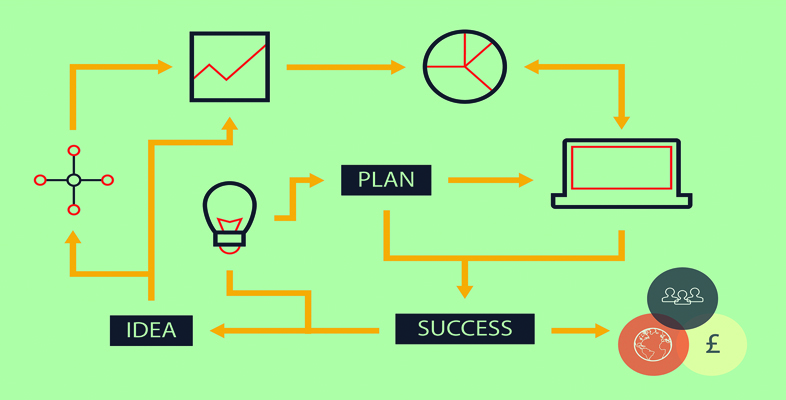3.1 Human resources
It seems too obvious, but enterprises need to work with the right people, and that assessment of the right person for the right job includes the entrepreneur.
In your own enterprise, the separation between intangible and human resources may seem artificial as it may only be you and what you know. Perhaps you can do it all: think of ideas, have the skills to make them happen, attract the right funding, keep things running well, and be an advocate for the company. This can happen, but as an enterprise grows you will need to work with others. So how do you find the right people? One way is to think about the jobs that need to be done.
Activity 3 Job analysis
In this activity you are going to think in terms of a job, or a series of jobs, to be done.
Note that in this activity you won’t spend time considering the attributes of an entrepreneur, however, if you want to read more about this there are links to resources in the Further reading section at the end of this week.
Now imagine you had to advertise your own job, based on the job needs analysis below. What would you put in the essential criteria and what would be in the desirable ones? What specific capabilities are needed for it and how do these create value for customers?
By answering the questions below, you will conduct a job needs analysis.
Job role
- What tasks are required to produce the product or service?
- What tasks are required to sell the product or service?
- What tasks are required to support the production and sales staff?
- Which of these tasks need to be done in-house?
Purpose of job
- How does it contribute to the successful production of the product?
- How does it contribute to the successful sale of the product?
- How does it contribute to achieving the aims of the firm?
Essential functions
- What key tasks actually form the job?
- Are they all essential?
- How are the key tasks related to each other?
- Is there a sequence in which the tasks have to be done?
- What physical activities need to be performed?
- Can the activities be shared among a number of people?
- How much time is spent on each task?
- Are the tasks equally important to the successful completion of the job?
- What happens if a task is not completed?
Job qualifications
- Are formal qualifications required?
- Is specialist knowledge required?
- What are the skills required?
- What training is required?
- What previous experience is required?
Job context
- Where are the essential tasks done?
- How is the work organised?
- What are the physical conditions?
- What are the social conditions?
- How is the job supervised?
If you found this activity useful you might want to apply the same process to another role/job. If your family or friends do a job, it could make it easier to use this to have a conversation around how well they perform it.
As your business develops, eventually you may need to look outside the organisation for specialist skills or experience. It is wise to anticipate that there may be tensions in a team as you progress, due to disagreements about expectations, performance and capabilities. If you can anticipate and resolve to discuss these things openly and honestly, you will be better able to overcome tensions and become a stronger team as a result.
Using the questions in the job needs analysis and talking about these together is a more objective way of discussing things and, if each participant is open to understanding different ideas and points of view, improvements and suggestions may result. Allied to this issue is the organisation’s culture. Without going into this in any depth, perhaps the fit between the person and the role is less of an issue than how well they fit with the culture you create (deliberately or by your example). If interested, you can learn more about this and other aspects of human resources in the Further reading section at the end of this week.
Being able to recognise how the resources you have (or can readily access) relate to a potential opportunity, and then deploying them effectively, is an important part of your enterprise’s success. It may seem easier to recognise how to acquire and align physical resources than human ones, however, in the next section you will see how this has its own challenges and opportunities.
